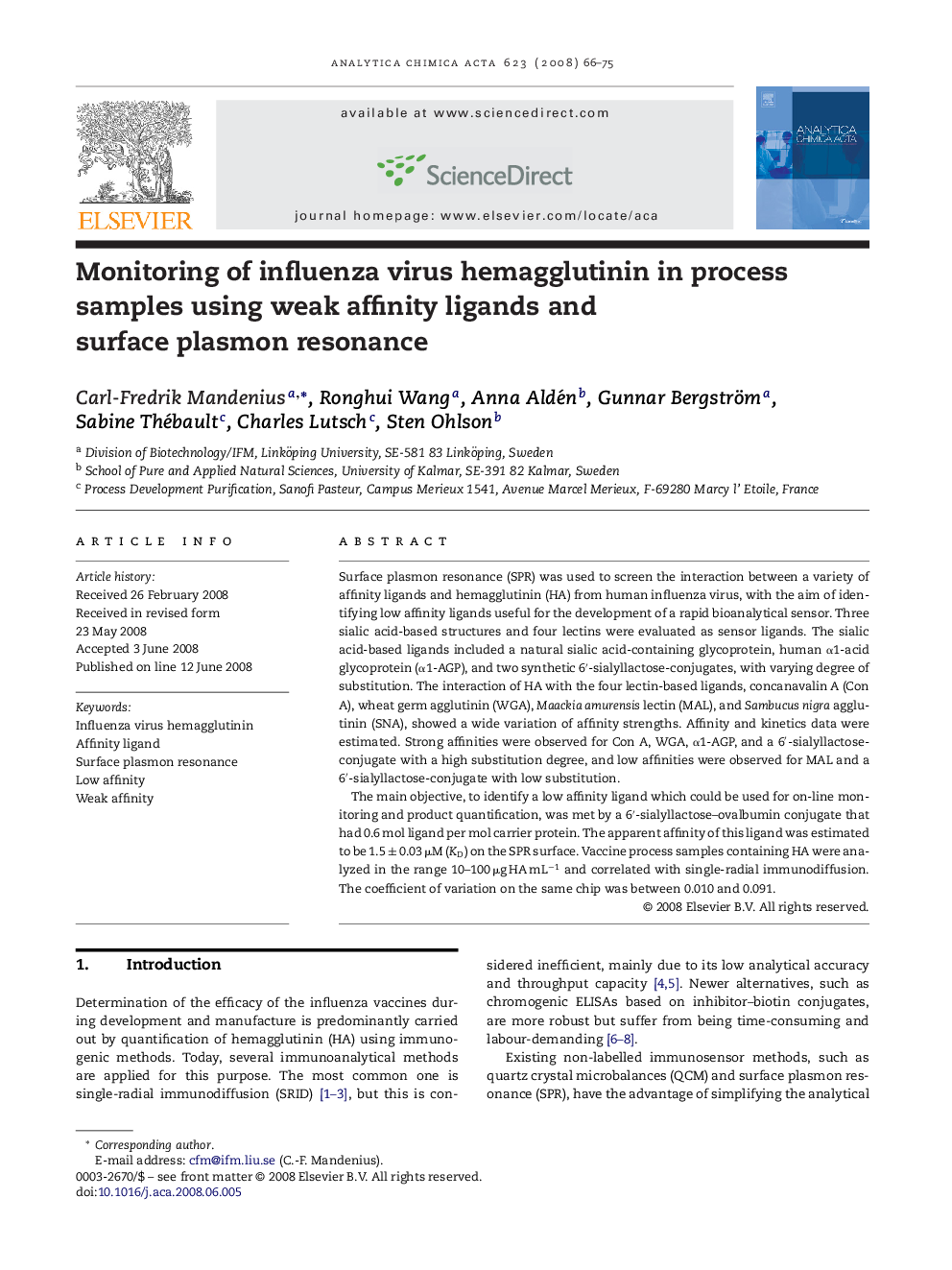| Article ID | Journal | Published Year | Pages | File Type |
|---|---|---|---|---|
| 1169355 | Analytica Chimica Acta | 2008 | 10 Pages |
Surface plasmon resonance (SPR) was used to screen the interaction between a variety of affinity ligands and hemagglutinin (HA) from human influenza virus, with the aim of identifying low affinity ligands useful for the development of a rapid bioanalytical sensor. Three sialic acid-based structures and four lectins were evaluated as sensor ligands. The sialic acid-based ligands included a natural sialic acid-containing glycoprotein, human α1-acid glycoprotein (α1-AGP), and two synthetic 6′-sialyllactose-conjugates, with varying degree of substitution. The interaction of HA with the four lectin-based ligands, concanavalin A (Con A), wheat germ agglutinin (WGA), Maackia amurensis lectin (MAL), and Sambucus nigra agglutinin (SNA), showed a wide variation of affinity strengths. Affinity and kinetics data were estimated. Strong affinities were observed for Con A, WGA, α1-AGP, and a 6′-sialyllactose-conjugate with a high substitution degree, and low affinities were observed for MAL and a 6′-sialyllactose-conjugate with low substitution.The main objective, to identify a low affinity ligand which could be used for on-line monitoring and product quantification, was met by a 6′-sialyllactose–ovalbumin conjugate that had 0.6 mol ligand per mol carrier protein. The apparent affinity of this ligand was estimated to be 1.5 ± 0.03 μM (KD) on the SPR surface. Vaccine process samples containing HA were analyzed in the range 10–100 μg HA mL−1 and correlated with single-radial immunodiffusion. The coefficient of variation on the same chip was between 0.010 and 0.091.
